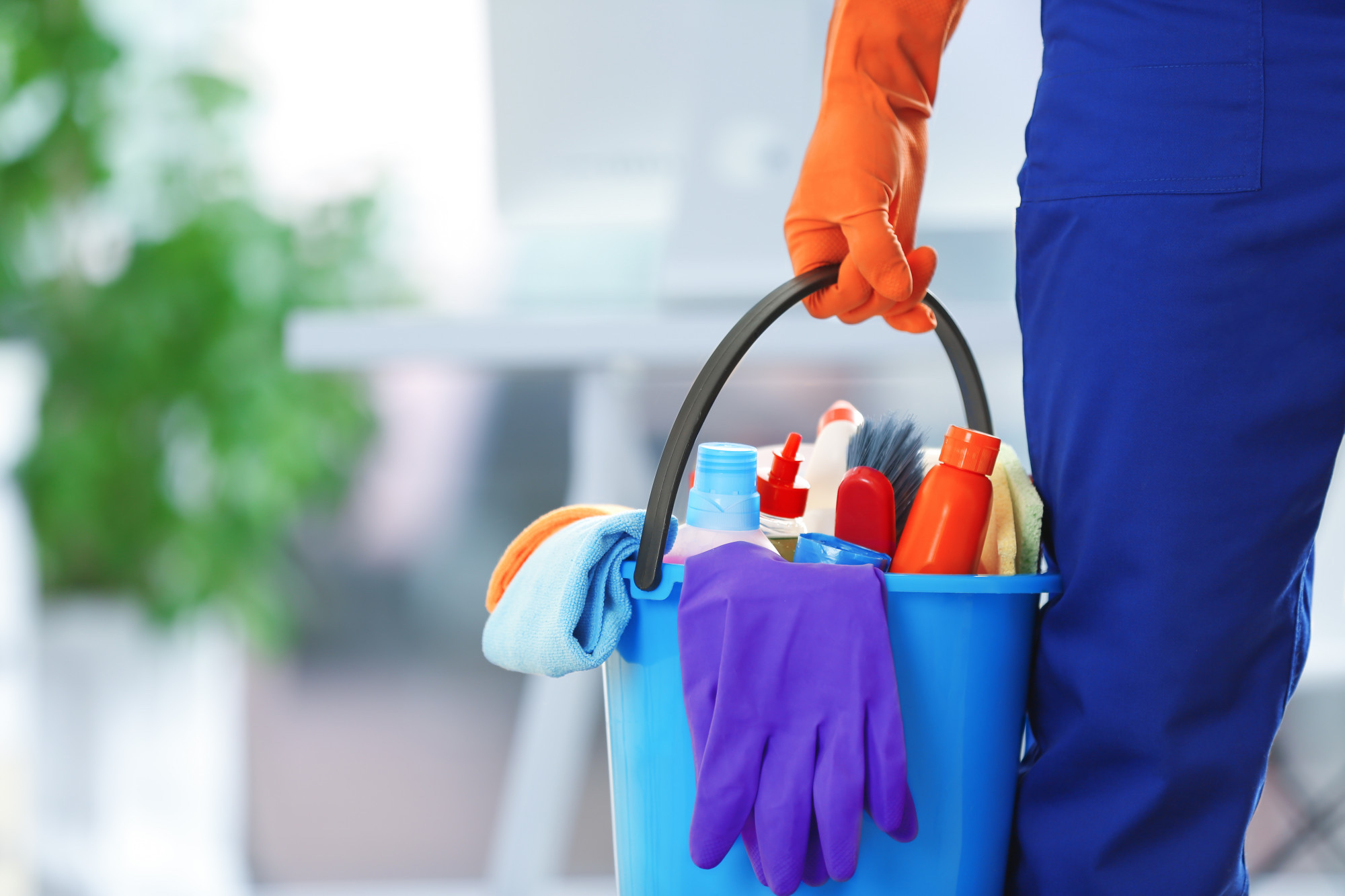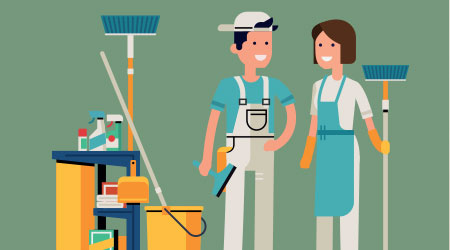The Very Best Everyday Cleaning Practices: Scrub the Surfaces, Vacuum Carpets, and Keep Clutter away
The Very Best Everyday Cleaning Practices: Scrub the Surfaces, Vacuum Carpets, and Keep Clutter away
Blog Article
Recognizing the Requirement for Extensively Sanitizing and Sanitizing Often Touched Surface Areas in High-Traffic Locations
In the world of public health and security, the careful sanitation and sanitization of frequently touched surface areas in high-traffic areas stand as extremely important actions in protecting against the spread of dangerous pathogens. By checking out the numerous aspects of surface area sanitation, from the risks associated with ignoring cleansing methods to the efficient approaches that can be used, a more clear understanding emerges of the important role these methods play in guarding public health.
Importance of Surface Disinfection
Highlighting the thorough disinfection of high-traffic surface areas is crucial in keeping a sanitary environment and avoiding the spread of hazardous microorganisms. High-touch surfaces such as door handles, light switches, lift switches, and counter tops act as breeding grounds for viruses and germs. Routine sanitation of these surface areas is important to lower the threat of contamination and transmission of diseases.
By implementing a robust sanitation procedure, institutions and businesses can create a safer setting for site visitors, customers, and workers. Correct surface disinfection not just reduces the spread of contagious diseases however also imparts confidence in the sanitation and safety of the premises. This proactive approach shows a commitment to health and wellness and wellness, which is specifically essential in high-traffic areas where the chance of direct exposure to virus is enhanced.
Furthermore, surface area sanitation plays a vital role in general infection control strategies. Incorporated with hand health techniques, wearing masks, and preserving physical distancing, complete disinfection of high-touch surfaces creates a thorough defense versus the transmission of dangerous bacteria. Focusing on surface area sanitation is a crucial part of an alternative method to health and wellness in shared spaces.
Dangers of Disregarding Cleaning Practices
Neglecting complete sanitation of high-traffic surface areas significantly enhances the threat of viral and microbial contamination, posing a significant risk to the health and safety and security of people frequenting these rooms. Failure to execute correct cleaning practices can lead to the build-up and spread of damaging virus, including germs and viruses, on frequently touched surface areas such as doorknobs, handrails, elevator switches, and kitchen counters.

Additionally, neglecting the relevance of extensive cleaning not just jeopardizes the well-being of individuals however likewise undermines initiatives to maintain a sanitary and tidy atmosphere. It is crucial to acknowledge the importance of correct sanitation protocols in protecting against the spread of infections and guarding public health.
Effective Sanitation Approaches
To maintain ideal sanitation and lower the risk of contamination on high-traffic surfaces, employing efficient disinfection approaches is important. Among one of the most common and efficient sanitation approaches is using chemical anti-bacterials. These products can differ in stamina and composition, with some targeting specific microorganisms like infections or microorganisms. It is critical to adhere to the manufacturer's directions for correct dilution, get in touch with time, and ventilation when utilizing chemical anti-bacterials to ensure their performance - Everyday cleaning.
Another efficient method is using UV-C light. UV-C light has actually been shown to be effective in killing a vast selection of microbes by disrupting their DNA framework, therefore stopping them from reproducing. It is essential to use UV-C light correctly, ensuring that the correct intensity and direct exposure time are used to attain the wanted sanitation results.
In addition, employing heavy steam cleaning as a disinfection method can be highly effective, especially on surface areas that are heat-resistant. Steam can penetrate permeable surface areas and kill bacteria, infections, and other microorganisms successfully. When making use of steam cleansing, it is very important to ensure that the surface reaches the required temperature level for an enough amount of time to ensure appropriate sanitation.
Impact on Public Health And Wellness
The upkeep of high criteria of sanitation and sanitation on high-traffic surfaces plays a vital role in protecting public health. Often touched surface areas in locations with high tramp, such as doorknobs, hand rails, elevator switches, and washroom centers, offer as breeding premises for hazardous microorganisms.
Efficient cleanliness techniques not just protect people from falling ill yet additionally add to the general wellness of culture. Public health and wellness authorities emphasize the significance of keeping clean settings to stop break outs and include the spread of illnesses. In high-traffic areas like airports, institutions, healthcare facilities, and public transport systems, the impact of rigorous sanitation actions can not be understated. Prioritizing the sanitization of often touched surfaces is an aggressive approach to defrosted and cleaned every few months advertising public health and wellness and enhancing the security of individuals in shared rooms.
Carrying Out Routine Cleaning Up Methods
Without delay setting up and sticking to a regular routine of cleansing methods is vital for preserving the sanitation and security of high-traffic surfaces. Regular cleaning protocols are essential in avoiding the accumulation of germs and virus on frequently touched surfaces, specifically in areas with high foot website traffic. By applying a systematic strategy to cleaning, companies can properly reduce the risk of disease transmission and create a much healthier atmosphere for employees, customers, and the general public.
To establish an efficient cleansing timetable, it is vital to recognize high-traffic areas that call for regular attention. These locations may include doorknobs, handrails, lift buttons, washroom directory facilities, and common tools. Applying a routine cleansing program that targets these surfaces several times a day can significantly lower the spread of harmful bacteria and viruses.
Moreover, using proper cleaner and disinfectants is essential to making certain that surface areas are extensively sanitized. Routine training of cleaning up staff on correct cleansing methods and the value of adherence to the cleansing timetable is additionally essential in preserving a sanitary setting. By prioritizing constant cleaning protocols, companies can promote the wellness and wellness of individuals who connect with these high-traffic surface areas.

Conclusion
Finally, it is vital to prioritize comprehensive disinfection and sanitization of regularly touched surfaces in high-traffic locations to stop the spread of damaging microorganisms and preserve public health. Overlooking proper cleaning techniques can raise the danger of contamination and transmission of diseases. By carrying out normal cleaning protocols and utilizing efficient disinfection methods, we can develop a safer atmosphere for everyone (defrosted and cleaned every few months). It is imperative to acknowledge the importance of preserving tidy surface areas in high-traffic areas to make sure the well-being of the area.
In the realm of public wellness and safety and security, the meticulous disinfection and sanitization of regularly touched surface areas in high-traffic areas stand as paramount procedures in stopping the spread of harmful microorganisms. By discovering the different aspects of surface sanitation, from the dangers associated with overlooking cleaning procedures to the effective methods that can be employed, a more clear understanding arises of the essential function these techniques play in safeguarding public wellness.Furthermore, employing heavy steam cleansing as a disinfection method can be very efficient, specifically on surfaces that are heat-resistant. When click this using heavy steam cleaning, it is important to ensure that the surface gets to the required temperature for an adequate quantity of time to assure appropriate disinfection.
In final thought, it is crucial to focus on thorough disinfection and sanitization of frequently touched surface areas in high-traffic locations to stop the spread of harmful virus and maintain public wellness.
Report this page